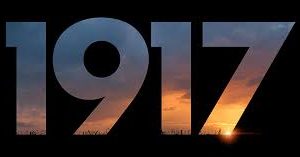Written by Charissa Roberson
At first glance, the most impressive aspect of Sam Mendes’ new film “1917” is its appearance of being one long tracking shot. The film follows two young British soldiers in WWI, who are tasked with delivering a message which will save hundreds of lives. As they cross miles of treacherous territory, the camera appears to follow them without pause for the full two-hour runtime. Although this is not actually the case, the film’s many segments are edited together seamlessly. In order to achieve this one-shot effect, the creators of “1917” rehearsed for six months prior to shooting, as star George McKay shares in an interview with Rotten Tomatoes. Every movement of the actors had to be choreographed in relation to the movement of the camera—and, with no help from editing, any mistake would result in having to start the entire sequence over again. As director-writer Mendes says in a behind-the-scenes featurette, “The challenges of prepping this movie are the challenges of prepping a normal movie, times about five.”
However, despite the astounding technological accomplishments of “1917”, one of the most amazing aspects is that you hardly notice the one-shot technique at all. Far from being just for show, the tracking camera serves the story incredibly well. “If you told it in a conventional way,” says producer Callum McDougall, “I don’t think you would have felt the energy.” Instead of cutting scenes short or using editing to relieve intense moments, the audience is forced to live through every movement as the soldiers do. “From the very beginning, I felt this movie should be told in real time,” says Mendes. “Every step of the journey, breathing every breath with these men.” Full of poignant emotion, breathtaking cinematography, and raw humanity, “1917” pulls you in from the moment it begins until the credits roll—and even afterwards, the experience of seeing this film is not easy to shake.




